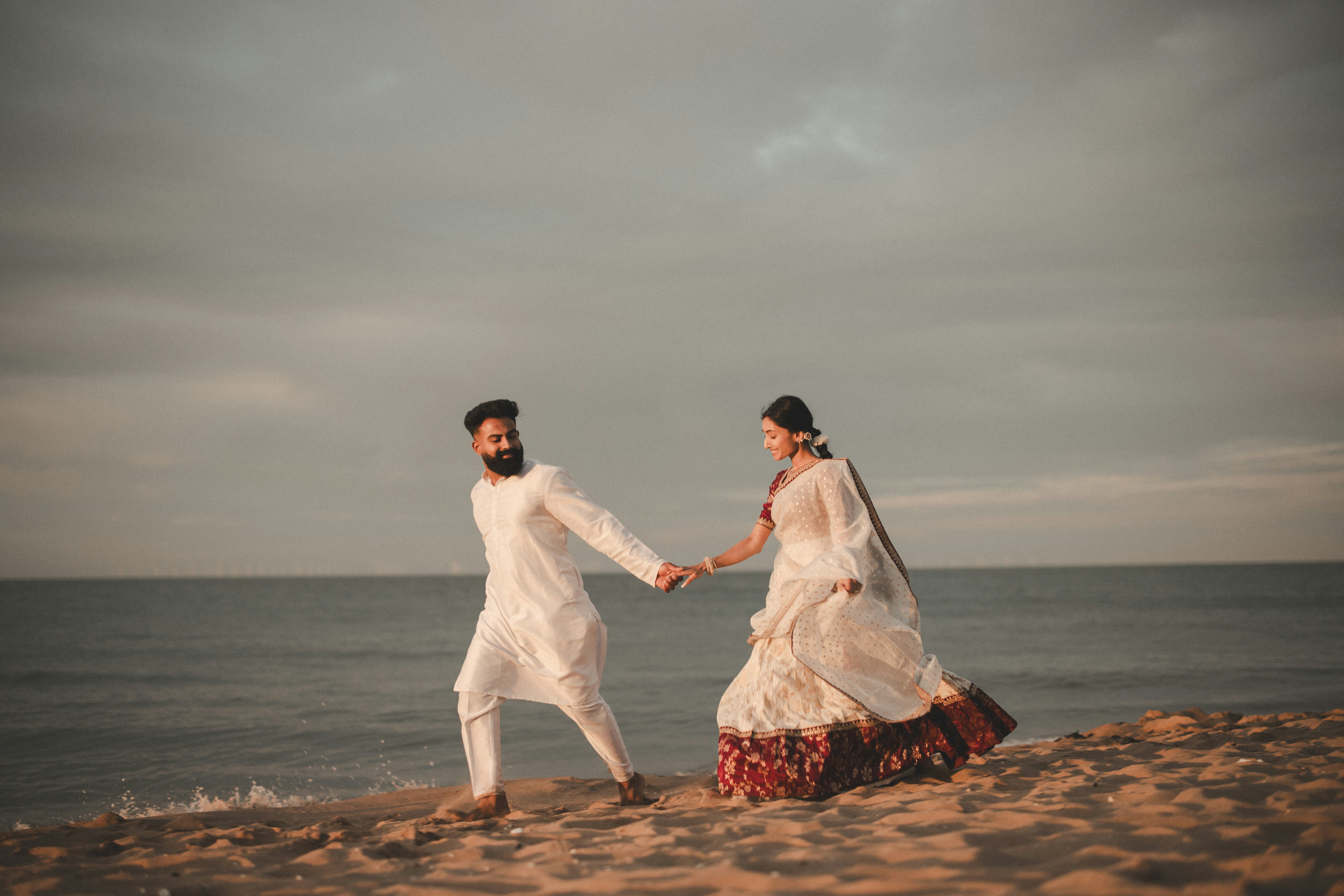Backhand mehndi designs have long been an integral part of Indian culture and are especially popular during festivals like Diwali. These intricate and artistic designs hold a special place in the hearts of women who adorn their hands with henna. In this article, we will explore the benefits and significance of backhand mehndi designs for Diwali.
1. Traditional Peacock Mehndi Design:
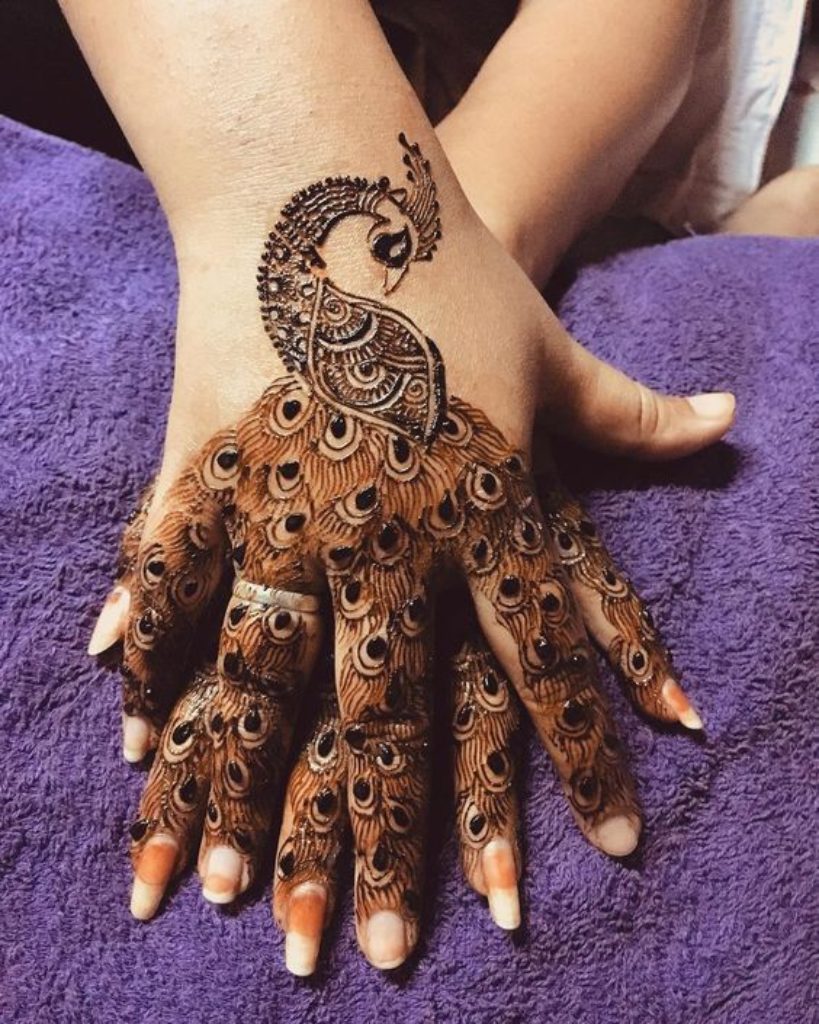
image credit in.pinterest.com
The traditional peacock design in henna art is a timeless and iconic motif. It typically features the graceful and intricate depiction of a peacock, one of India’s national birds. The peacock’s feathers are the focal point, with their eye-catching beauty and vibrant colors being represented through fine lines, swirls, and various patterns. The peacock symbolizes beauty, grace, and pride in Indian culture, making it a popular choice for special occasions like Diwali. This design often extends along the arm or hand, showcasing the full splendor of the peacock’s plumage.
2. Intricate Mandala Pattern Mehndi Design:
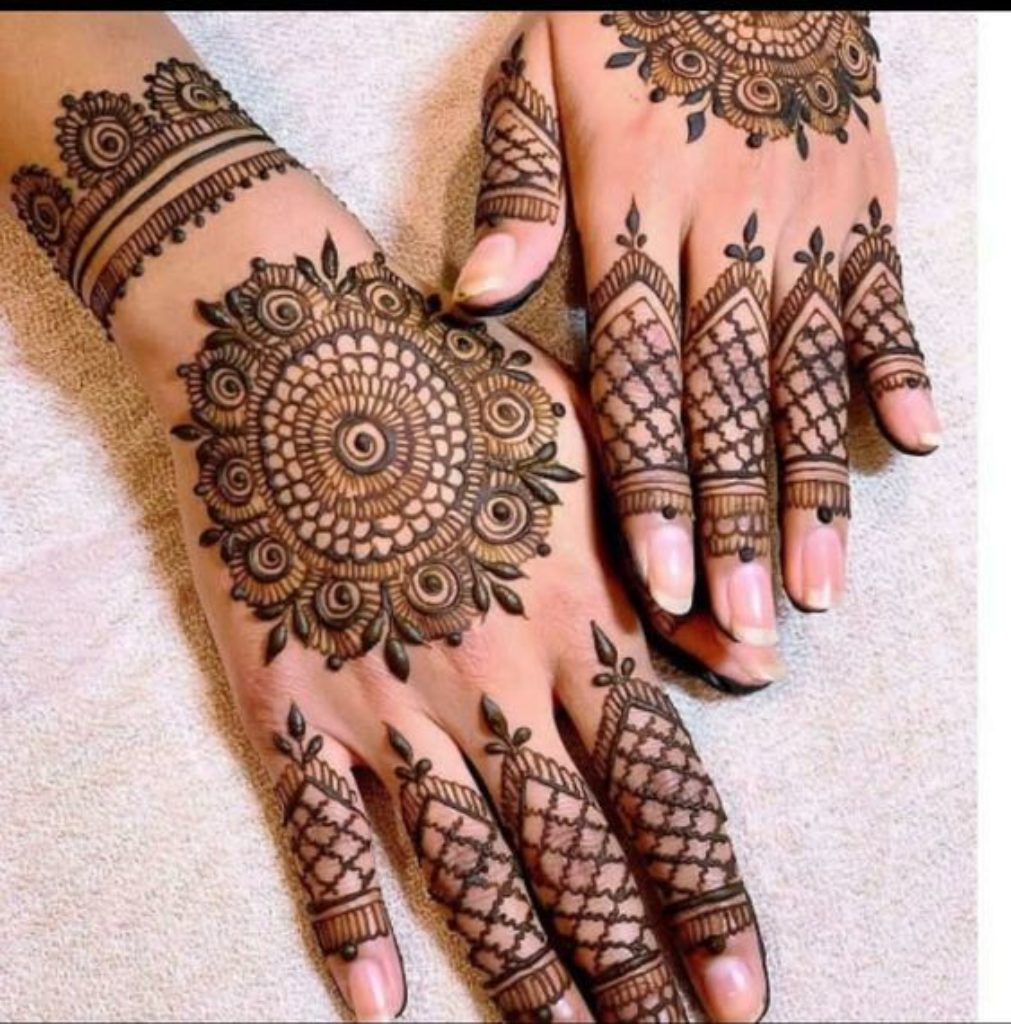
image credit fashionqween.com
Mandala patterns in henna art are characterized by their geometric precision and symmetrical designs. These intricate circular patterns often start from a central point and radiate outward, creating a mesmerizing and hypnotic effect. Mandalas are rich in symbolism and can represent unity, balance, and harmony. They are a symbol of the universe in many cultures. In henna art, mandalas are meticulously drawn using fine lines and repetitive shapes, creating a hypnotic and captivating effect.
3. Floral Vine with Leaves Mehndi Design:
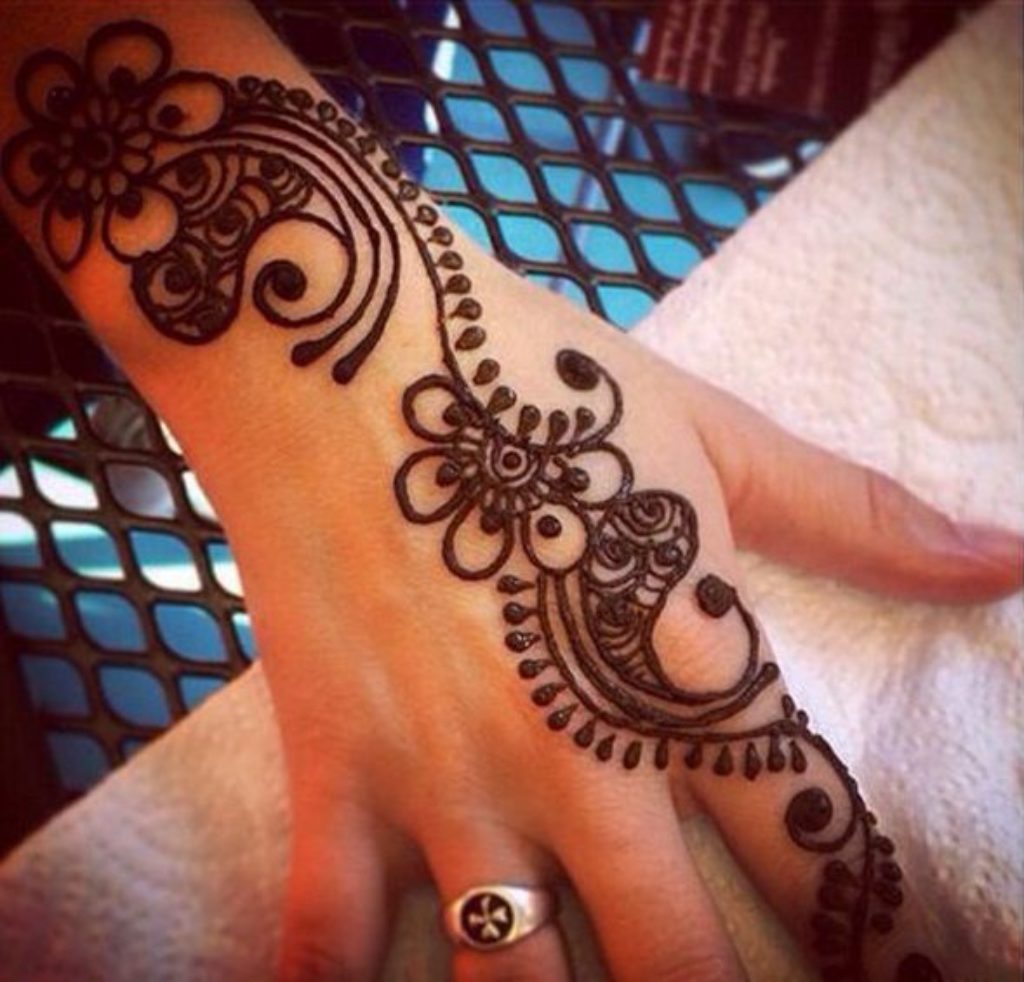
image credit folder.pk
The floral vine with leaves design is a delicate and elegant henna pattern. It typically features a winding vine adorned with flowers and leaves that snake around the hand or arm. Each flower and leaf is intricately detailed, often with small dots and fine lines to enhance the overall design. This pattern symbolizes growth, life, and nature’s beauty. It is a popular choice for Diwali, as it adds a touch of elegance and grace to their hands and arms.
4. Lotus and Paisley Motifs Mehndi Design:

image credit hu.pinterest.com
The lotus and paisley motifs are common elements in henna art, often combined to create a visually appealing design. The lotus flower represents purity, enlightenment, and rebirth in many cultures, while paisley patterns symbolize fertility and eternity. When combined, these motifs create a design that is both meaningful and aesthetically pleasing. The lotus is typically drawn with its petals open, radiating beauty, while paisley shapes add intricate detailing and fill the spaces between the lotus flowers.
5. Arabic Style Design with Geometric Patterns Mehndi Design:

image credit zerogravity.photography
Arabic-style henna designs are known for their bold and striking patterns. They often incorporate geometric shapes like triangles, circles, and squares, creating a visually captivating design. These patterns are characterized by their symmetry and precision, making them stand out. Arabic henna designs can be intricate and cover a large area, often extending from the fingertips to the forearm. Geometric patterns within these designs symbolize order, unity, and the interconnectedness of life.
6. Radial Mehndi Design:
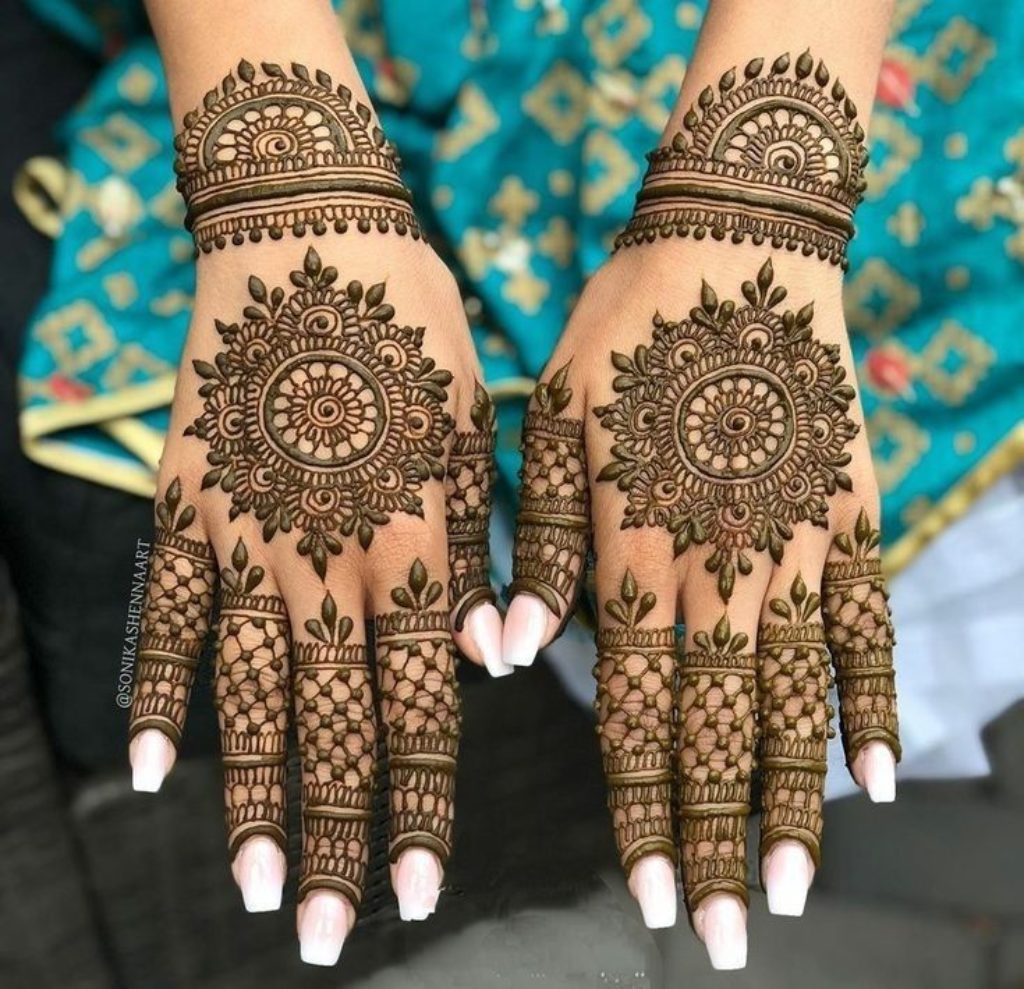
image credit pinterest.com
Radial mehndi designs are characterized by their symmetrical patterns that radiate outward from a central point. These designs often feature intricate floral motifs, geometric shapes, and fine detailing. The central point is typically adorned with a more elaborate and prominent design, while the surrounding patterns consist of delicate vines, leaves, and paisleys. Radial mehndi designs create a stunning visual impact when applied to the hands or feet, making them a popular choice for brides during weddings. The symmetry and balance in these designs symbolize harmony and unity, which are essential elements in Indian culture.
7. Rangoli Inspired Mehndi Design:
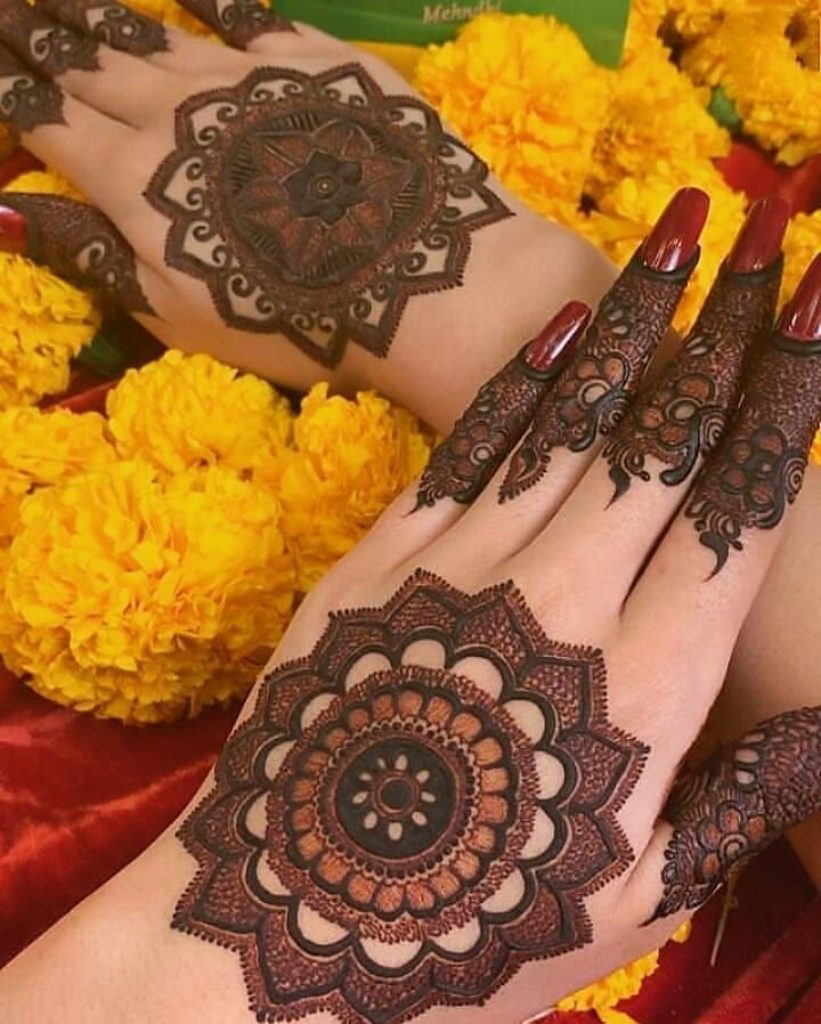
image credit br.pinterest.com
Rangoli inspired mehndi designs draw inspiration from traditional Indian art forms. Rangoli are integral parts of Indian festivals and celebrations. Mehndi designs inspired by these elements often feature intricate Rangoli-inspired geometric shapes. These designs symbolize the festival of lights, Diwali, and are often used to adorn hands and feet during this auspicious time.
8. Elephant Motif with Henna Patterns:
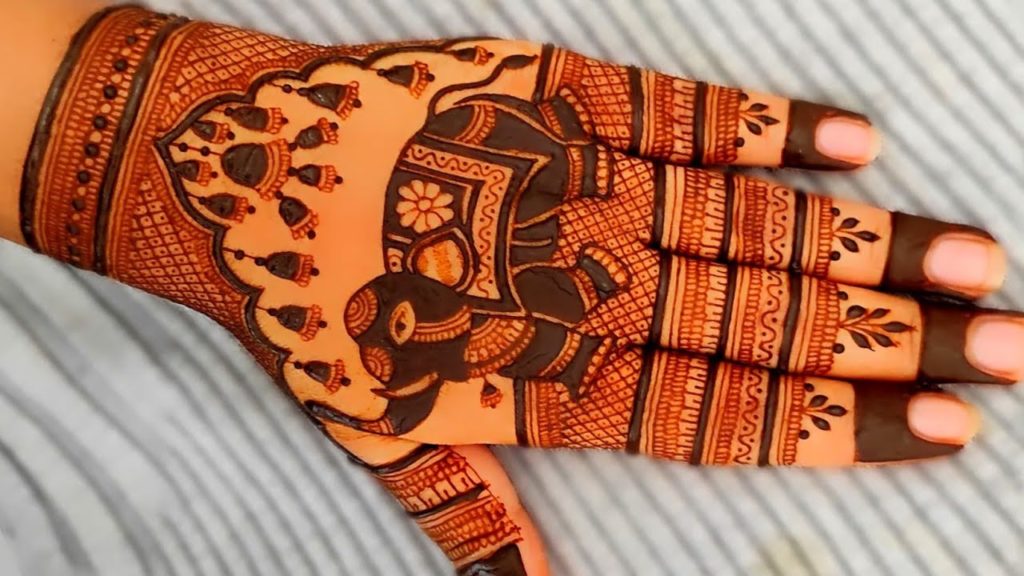
image credit youtube.com
Elephant motifs are a popular choice in mehndi design, symbolizing strength, wisdom, and good luck. When combined with henna patterns, these designs often feature beautifully decorated elephants surrounded by intricate vines, flowers, and other decorative elements. The majestic presence of the elephant adds a regal touch to the mehndi design, making it a favored choice for brides seeking a blend of tradition and elegance.
9. Minimalistic Mehndi Design:
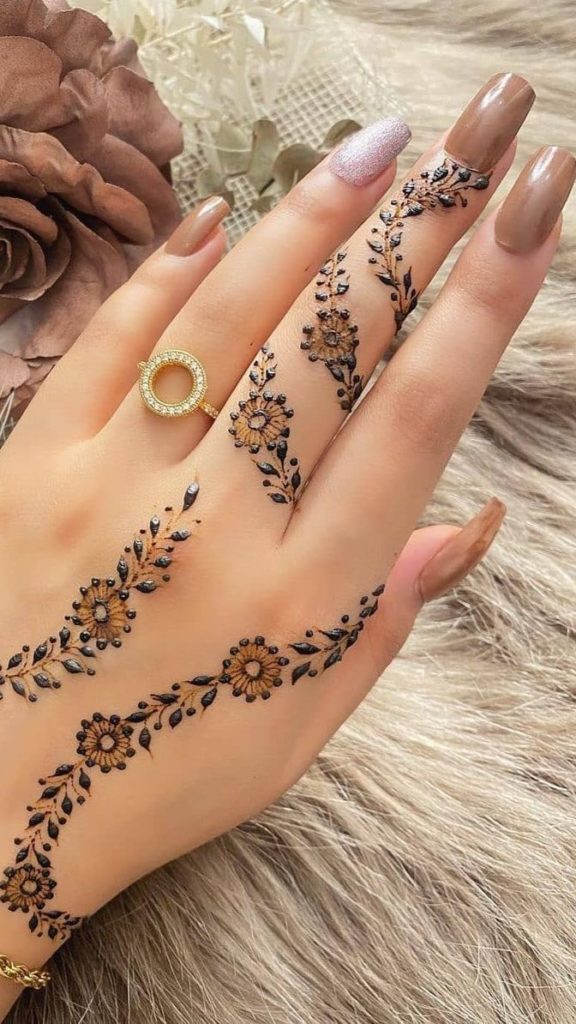
image credit seven.edu.vn
A Minimalistic Mehndi Design for Diwali is a wonderful choice for those who appreciate a subtle and refined style. It allows you to embrace the beauty of Mehndi without overwhelming your hands and arms with intricate patterns. This design is not only elegant but also perfect for those who want to balance tradition with a modern and minimalist aesthetic.
10. Ganesha Design with Swirls Mehndi Design:
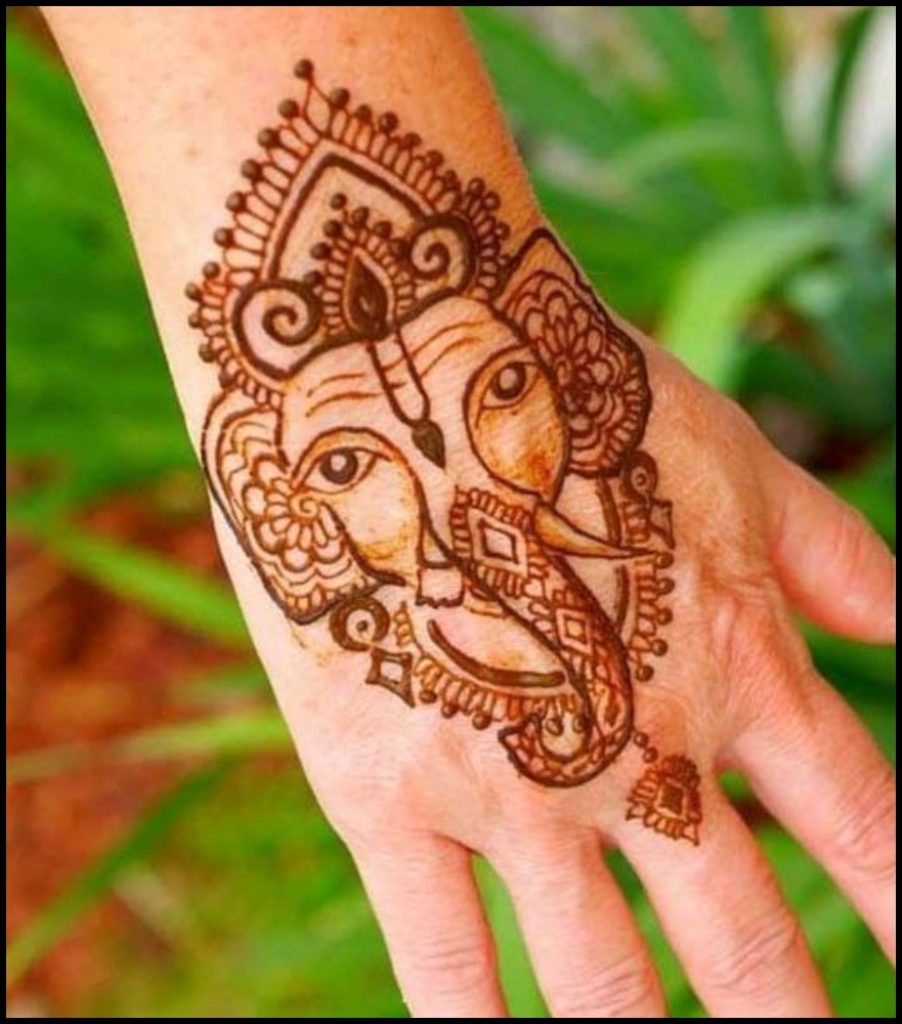
image credit mirraw.com
Ganesha, the elephant-headed Hindu deity, is a symbol of wisdom, knowledge, and the removal of obstacles. Mehndi designs featuring Ganesha often depict his image surrounded by intricate swirls, paisleys, and other decorative elements. These designs are not only aesthetically pleasing but also hold deep spiritual significance. Ganesha-themed mehndi designs are commonly applied during religious ceremonies, weddings, and festivals to seek blessings and guidance from the deity. The swirls and patterns that accompany Ganesha’s image enhance the overall beauty of the design while emphasizing the spiritual connection to this revered deity.
11. Glittery Mehndi with Rhinestones:
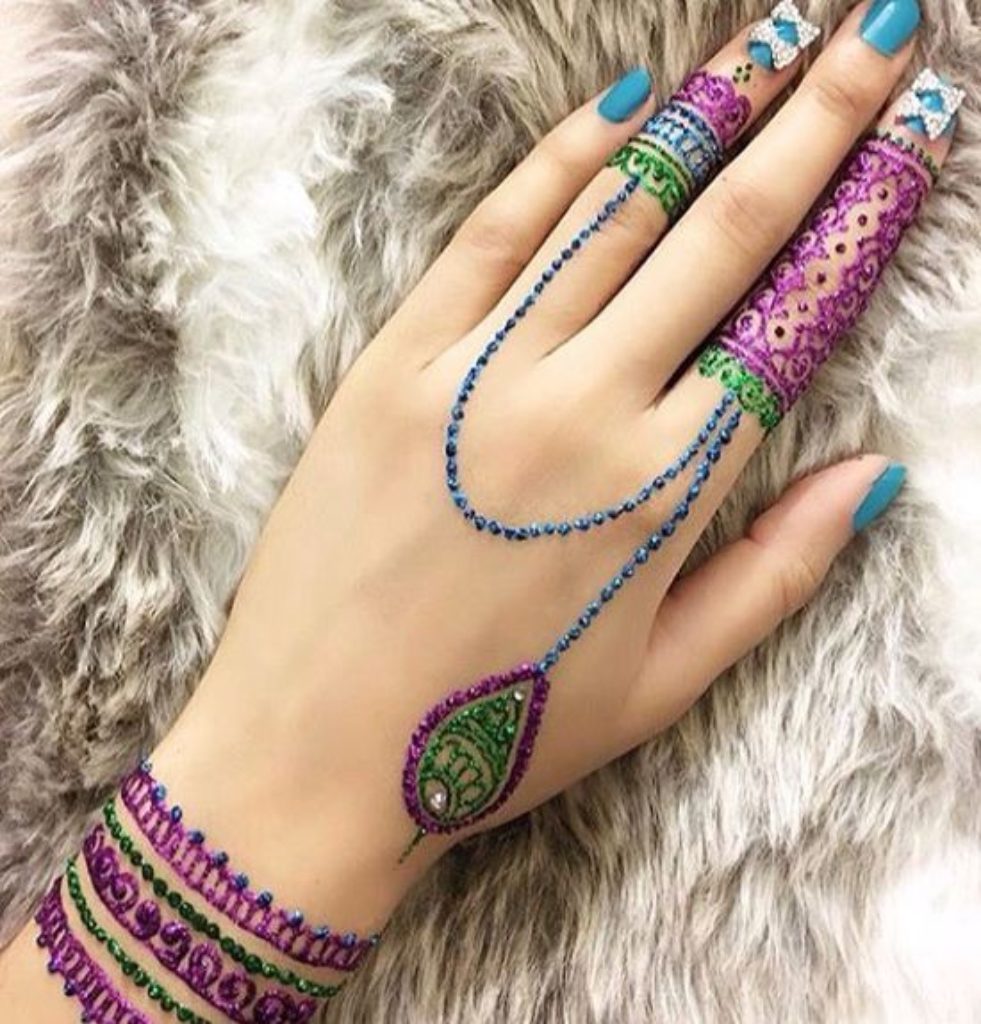
image credit pinterest.com
Glittery Mehndi with Rhinestones is a contemporary twist on traditional Mehndi art. In this modern variation, the Mehndi designs are enhanced with the addition of glitter and rhinestones, adding a touch of sparkle and glamour. The glittery elements shimmer and catch the light, making the designs even more eye-catching. Rhinestones, often strategically placed within the Mehndi patterns, provide a beautiful contrast between the earthy tones of henna and the dazzling brilliance of the stones. This fusion of tradition and modernity creates a stunning and unique look, perfect for brides and anyone looking to add a touch of elegance to their hands and feet.
12. Checkered and Striped Pattern Mehndi Design:
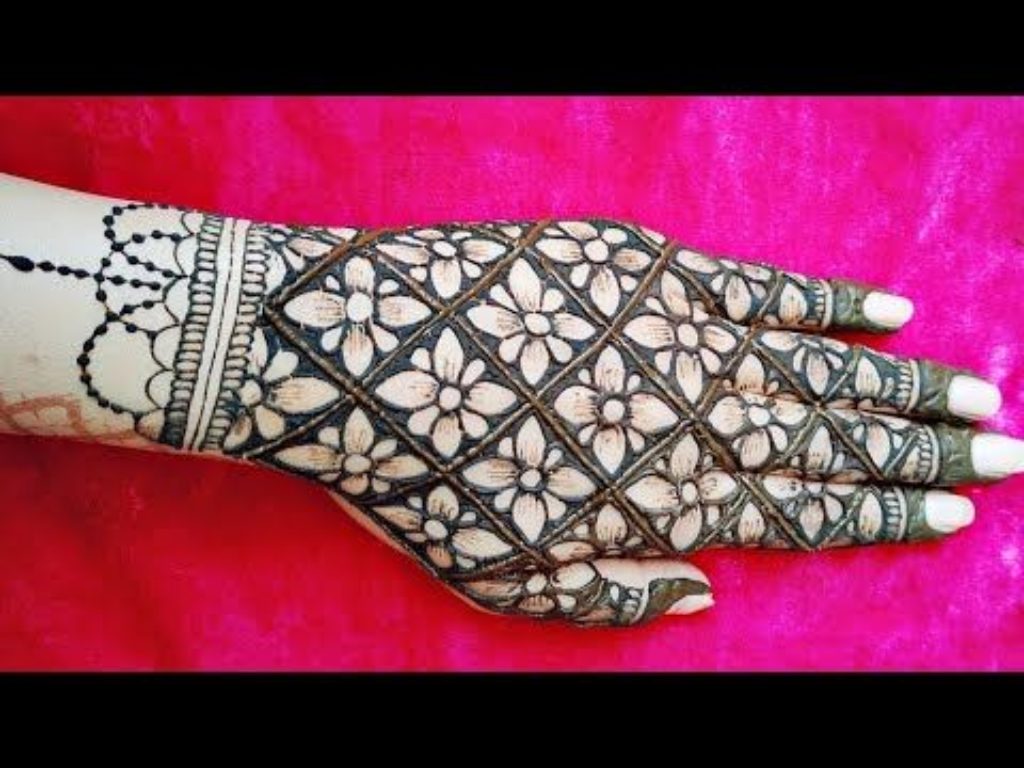
image credit in.pinterest.com
The Checkered and Striped Pattern is a versatile and timeless design theme used in various fashion and interior design contexts. Checkered patterns consist of alternating squares, typically in two contrasting colors, forming a grid-like pattern. Striped patterns, on the other hand, involve straight lines running parallel or diagonally across a surface. When combined, these two patterns create a visually appealing and dynamic design. Checkered patterns can convey a sense of order and balance, while stripes add movement and direction. This combination can be found in clothing, home decor, and even automotive design. Checkered and striped patterns can be bold or subtle, depending on color and scale, making them suitable for a wide range of applications, from classic black-and-white floor tiles to vibrant, colorful clothing.
13. Musical Instruments Theme Mehndi Design:
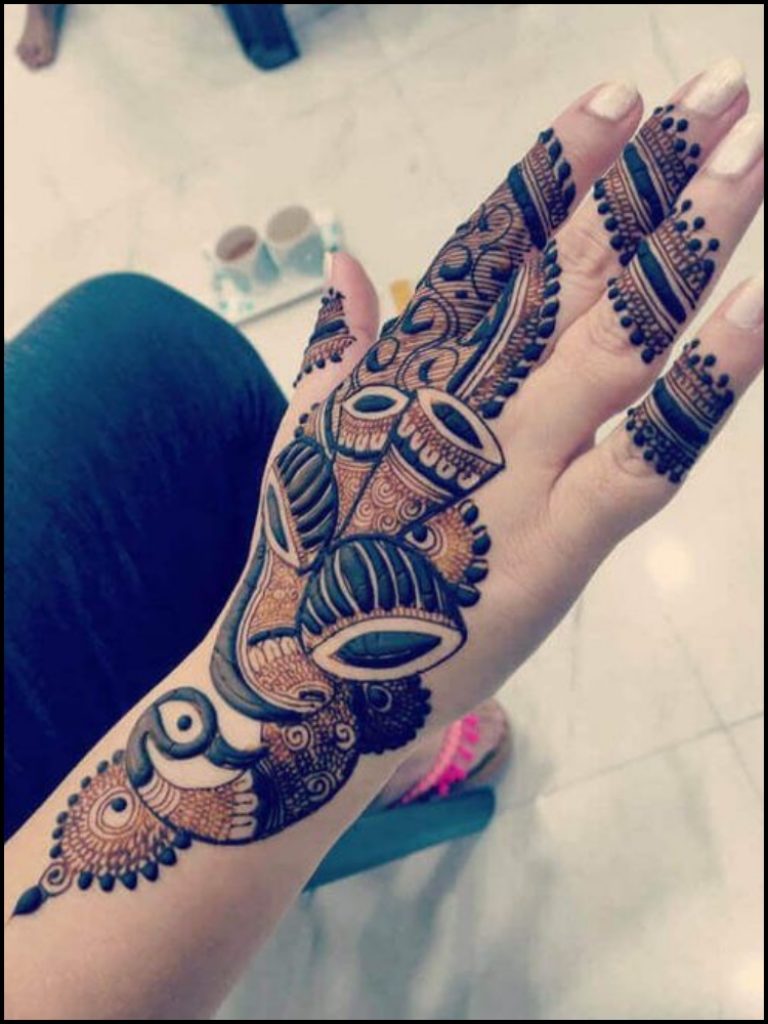
image credit stylex.vn
A Musical Instruments Theme is a design concept inspired by the world of music. This theme incorporates elements and imagery related to musical instruments, notes, and symbols. It’s a popular choice for music enthusiasts, music-themed events, and even interior decor in music studios or entertainment spaces. The design elements may include representations of various instruments like guitars, pianos, violins, drums, or saxophones. Musical notes, clefs, and other symbols associated with music notation can also be integrated into the theme.
14. Rajasthani Style Mehndi Design:

image credit meesho.com
A Rajasthani Style Mehndi Design is a beautiful and culturally rich choice for special occasions. It combines the timeless charm of Rajasthani culture with the elegance of Mehndi artistry. Whether you choose to adorn your hands and feet with this design for a wedding, festival, or any other celebration, it’s sure to leave a lasting impression and capture the essence of Rajasthan’s vibrant traditions.
15. Lace Mehndi Design:
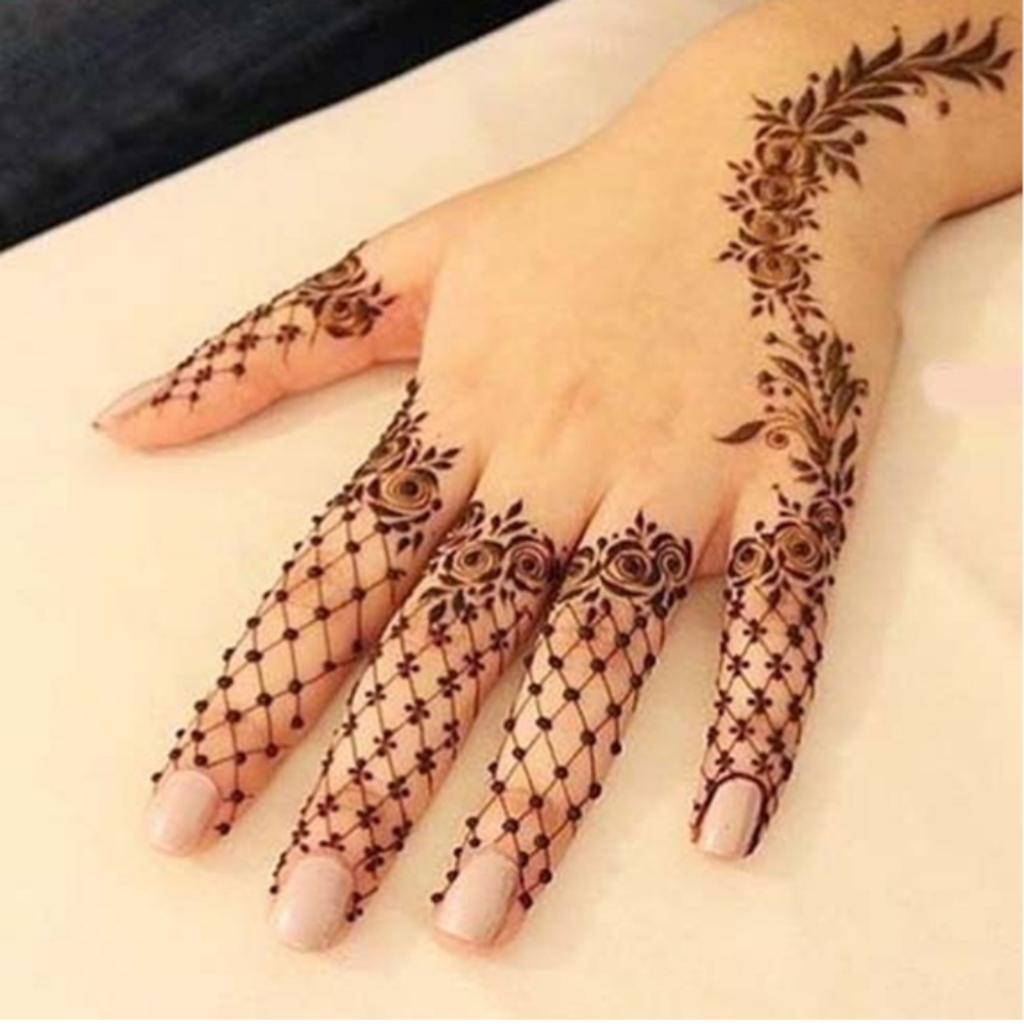
image credit weddingz.in
Lace mehndi designs are a captivating fusion of traditional henna artistry and the delicate beauty of lace patterns. These designs are characterized by their intricate and lacy appearance, resembling the elegance of lace fabric. Perfect for weddings, special occasions, and festivals, lace mehndi designs add a touch of sophistication and grace to your hands and feet. In this guide, we’ll explore how to create a stunning Lace Mehndi Design that will surely turn heads.
16. Moroccan Mehndi Design:
image credit pinterest.com
A Moroccan Mehndi Design offers a unique and contemporary twist to Diwali celebrations, blending the rich heritage of Moroccan art and architecture with the elegance of mehndi. Whether you choose to have this design applied by a professional mehndi artist or try it yourself, it’s sure to make a statement and add a touch of cultural diversity to your Diwali festivities.
17. Gujarati Mehndi design:
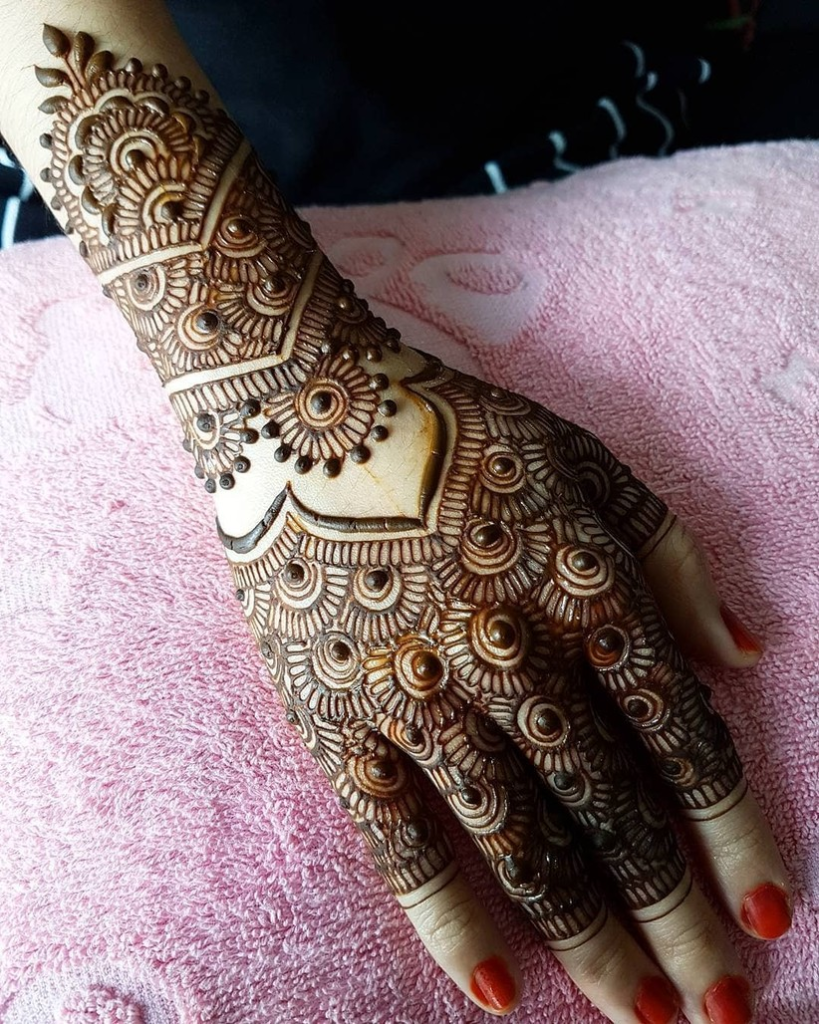
image credit in.pinterest.com
Gujarati Mehndi designs are known for their simplicity, elegance, and unique use of geometric patterns. These designs are perfect for celebrating Diwali, adding a touch of tradition and culture to your festive look. In this guide, we’ll explore how to create a beautiful Gujarati Mehndi Design that’s perfect for the Festival of Lights.
18. Floral Mehndi Design:
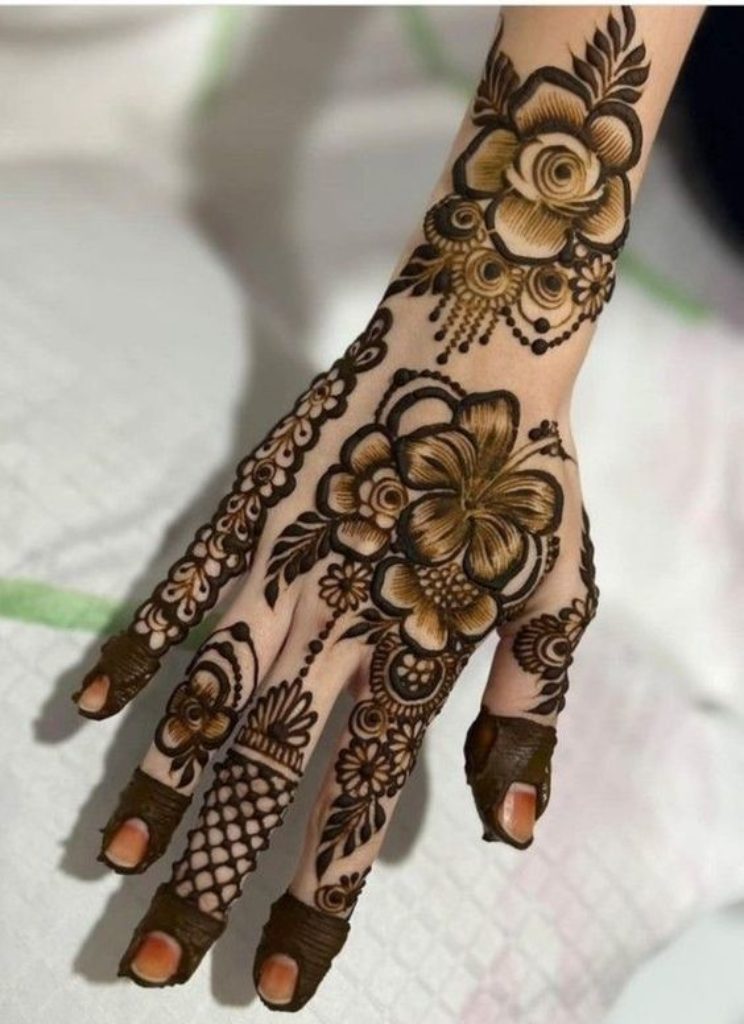
image credit flowersnamez.com
A Floral Mehndi Design is a perfect choice for celebrating Diwali, as it embodies the beauty of nature and the positive energy of the festival. Its intricate flower patterns and delicate vines create a graceful and enchanting look that complements your festive attire. Whether you’re attending a Diwali celebration or simply want to embrace the elegance of floral mehndi, this design is sure to add a touch of charm and tradition to your festive ensemble.
19. Indian Jewelry Inspired Design:
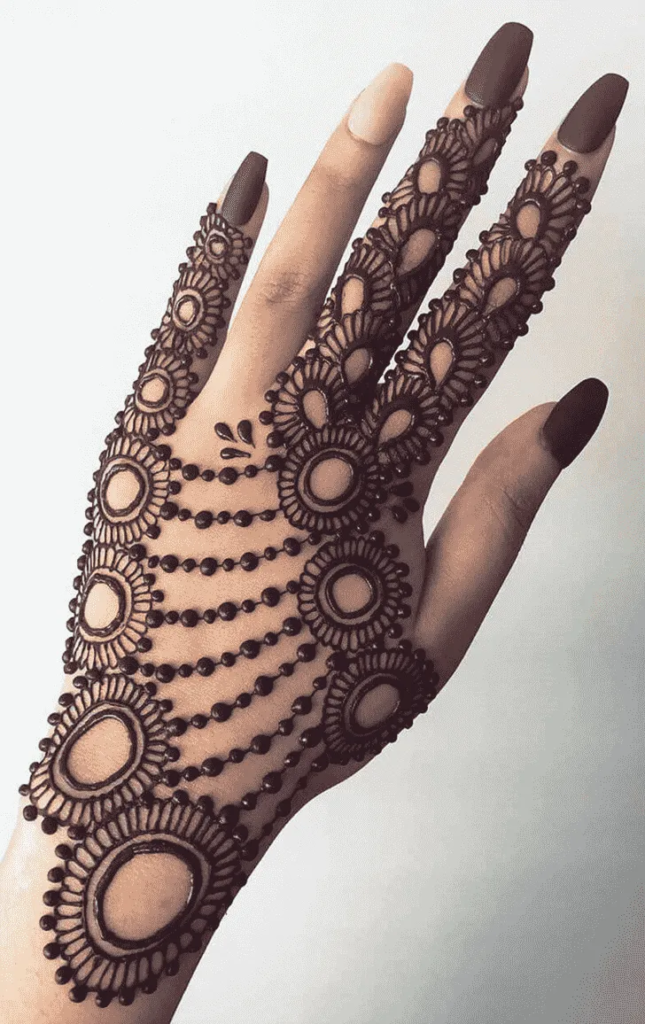
image credit in.pinterest.com
An Indian Jewelry-Inspired Mehndi Design is a regal and elegant choice for special occasions, showcasing the timeless beauty of Indian jewelry. Its intricate motifs, gemstone accents, and cultural significance create a look of grace and sophistication. Whether you’re a bride looking for the perfect wedding mehndi or attending a grand celebration, this design choice is sure to exude the charm and opulence of traditional Indian jewelry.
20. Diya Mehndi Design:
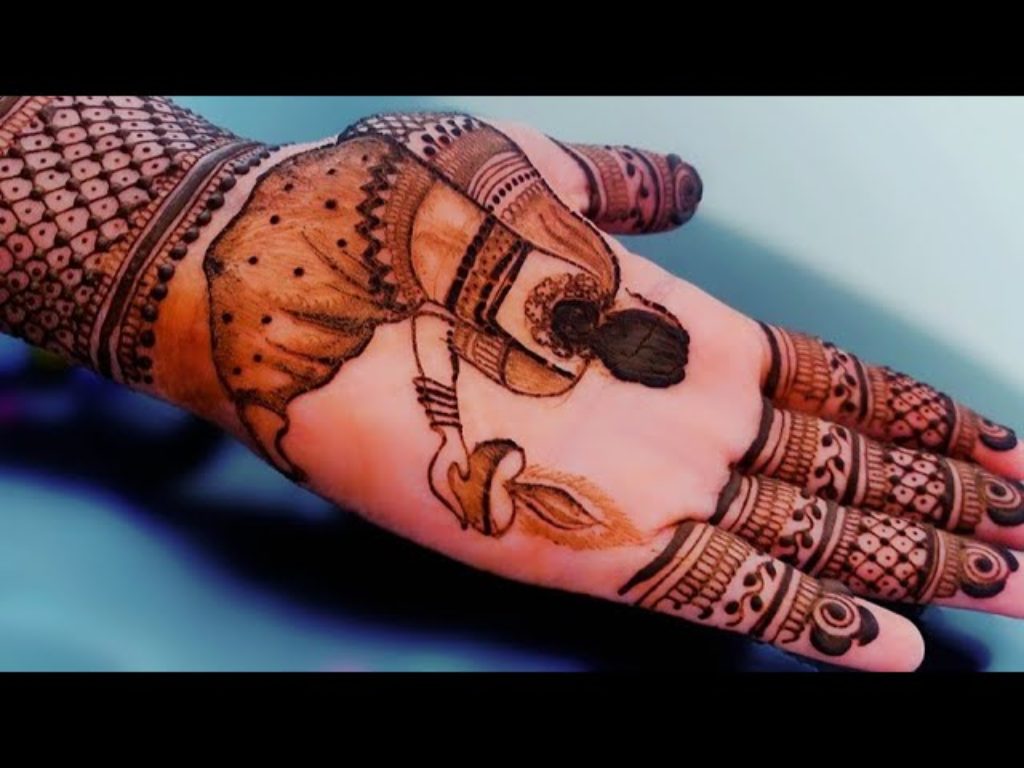
image credit youtube.com
A Diya Mehndi Design for Diwali is a beautiful and meaningful way to celebrate the Festival of Lights. It pays homage to the significance of Diyas in this festival while also embracing the rich tradition of mehndi artistry. Whether you choose to have this design applied by a professional mehndi artist or try it yourself, it will surely add a touch of festivity and cultural significance to your Diwali celebrations. Enjoy the radiant beauty of this unique mehndi style!
21. Radha-Krishna Portrait Mehndi Design:
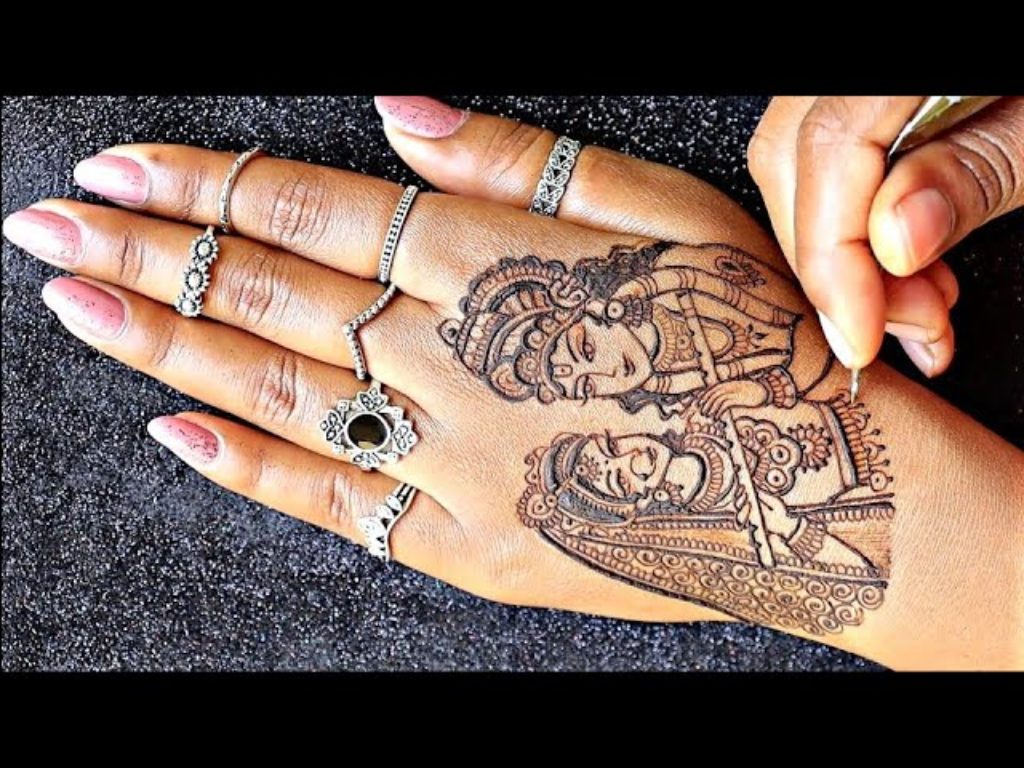
image credit youtube.com
A Radha-Krishna portrait is a depiction of the divine love between Lord Krishna and Radha, a central theme in Hindu mythology and devotion. In these mehndi designs, Lord Krishna, often depicted as a blue-skinned deity, is shown playing his flute, while Radha, his beloved, is by his side. The portrayal highlights the profound spiritual connection and romantic love shared between them.
22. Swirling Vine and Floral Patterns Mehndi Design:
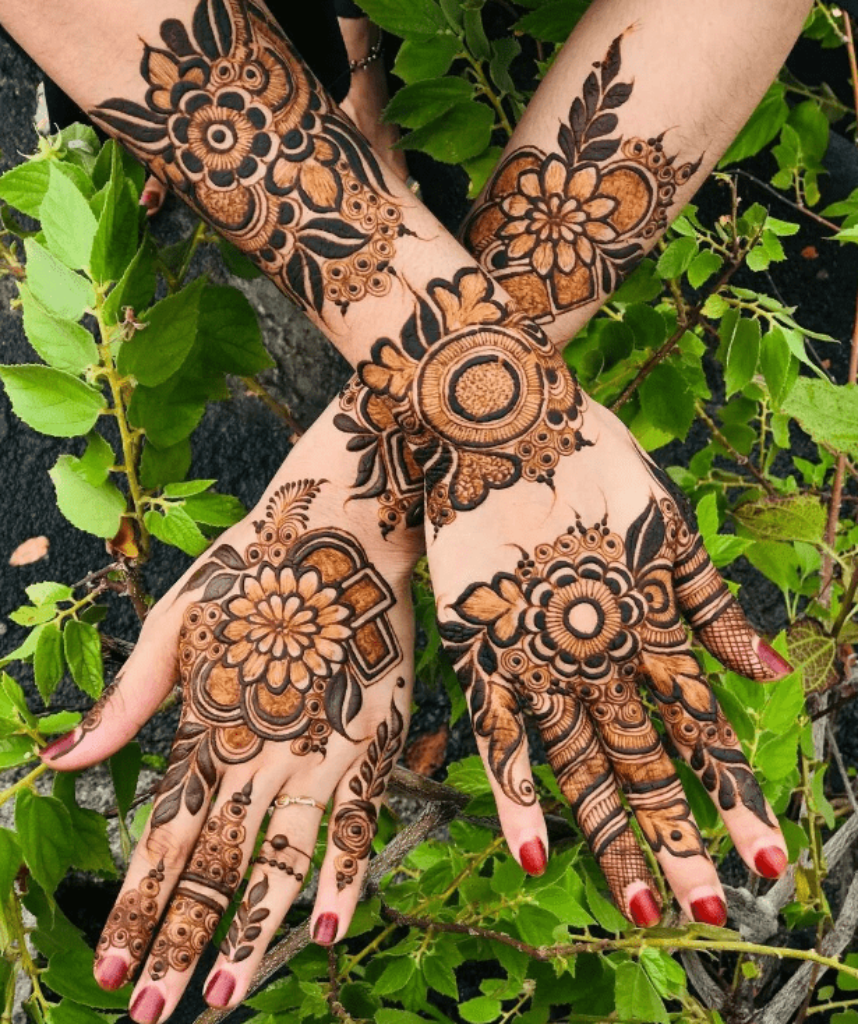
image credit meenaboutique.in
Swirling vine and floral patterns are intricate and delicate design motifs commonly used in various forms of art and decoration. These patterns feature gracefully winding vines, leaves, and blooming flowers. They are celebrated for their natural and organic aesthetic, symbolizing growth, renewal, and life. Often found in textiles, wallpapers, and architectural ornamentation, they create a sense of elegance and charm. In interior design, these patterns can bring a touch of nature indoors, making spaces feel more inviting and tranquil.
23. Dotted Henna Mehndi Design:
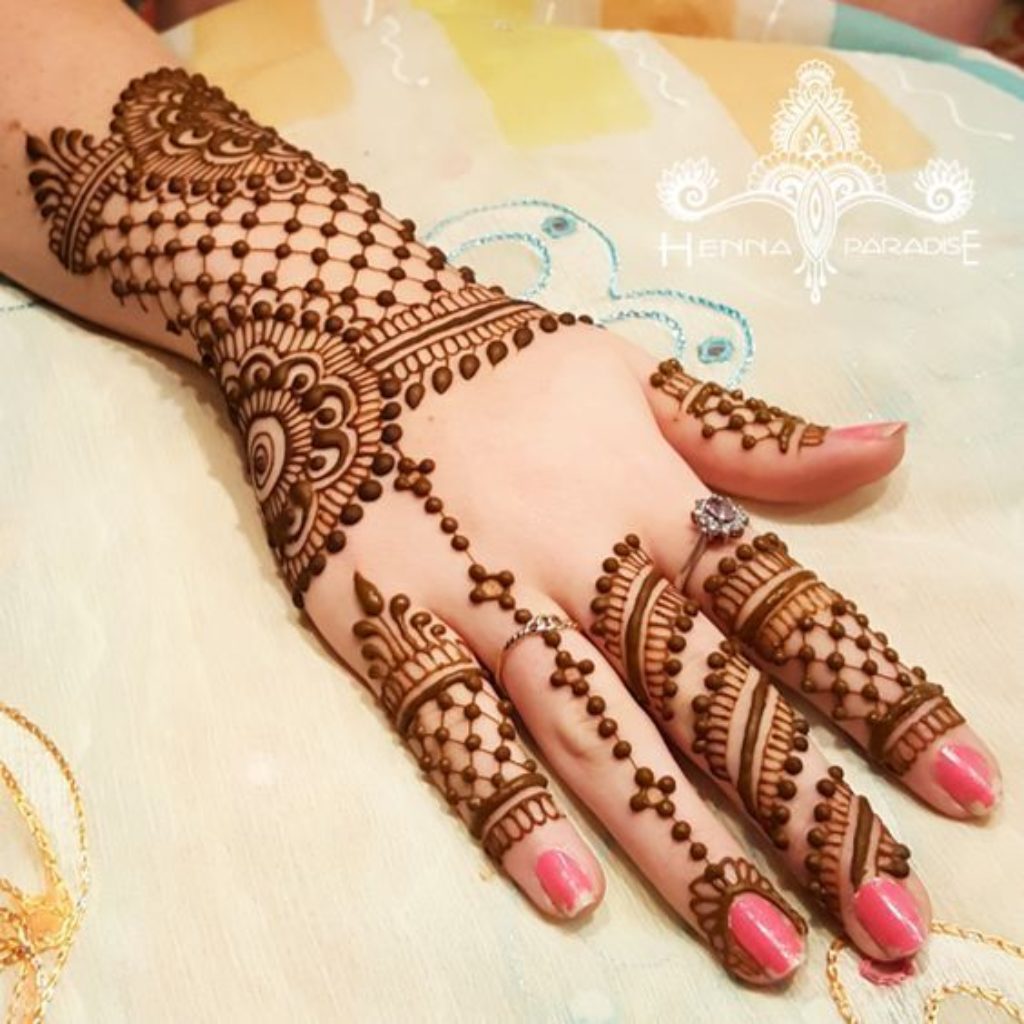
image credit wedmegood.com
Dotted henna designs, also known as mehndi or henna tattoos, are a traditional form of body art originating from South Asia and the Middle East. These intricate patterns are created using henna paste, which leaves a temporary stain on the skin. Dotted henna designs consist of a multitude of tiny dots arranged to form intricate shapes and patterns. They are often applied to the hands and feet for special occasions like weddings, festivals, and celebrations.
24. Paisley and Peacock Feather Fusion Mehndi Design:
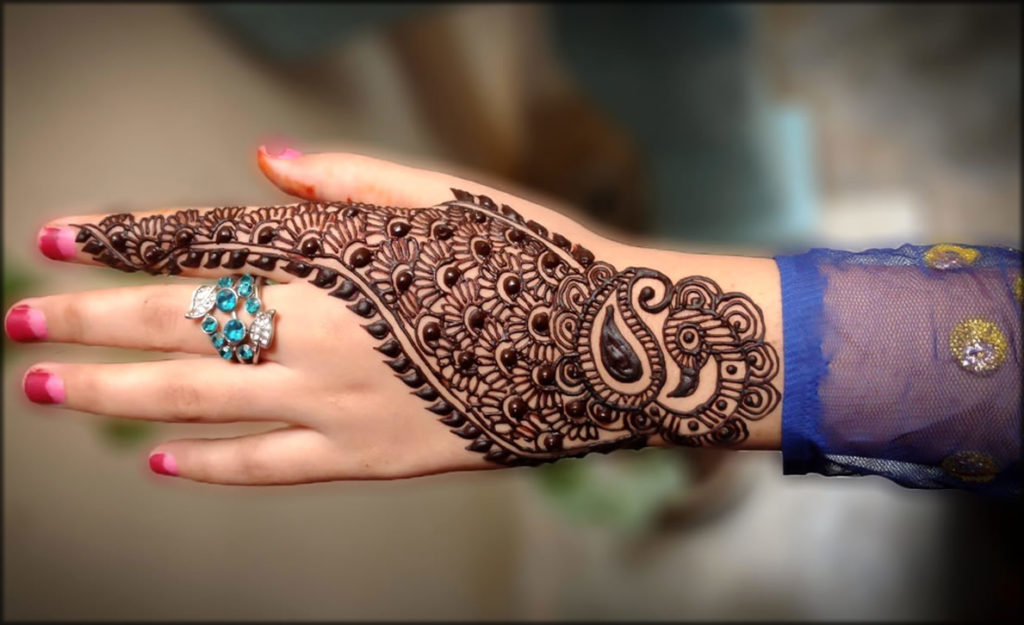
image credit stylesnic.com
The fusion of paisley and peacock feather motifs in design is a captivating blend of two distinct elements, each with its own symbolic significance. Paisley patterns, with their teardrop or kidney-shaped motifs, have a rich history and are often associated with Persian and Indian cultures. They symbolize fertility, life, and abundance. On the other hand, peacock feathers are renowned for their vibrant colors and iridescence, representing beauty, renewal, and pride. When combined, these motifs create a visually striking and culturally significant design.
25. Celestial Theme with Stars and Moons Mehndi Design:
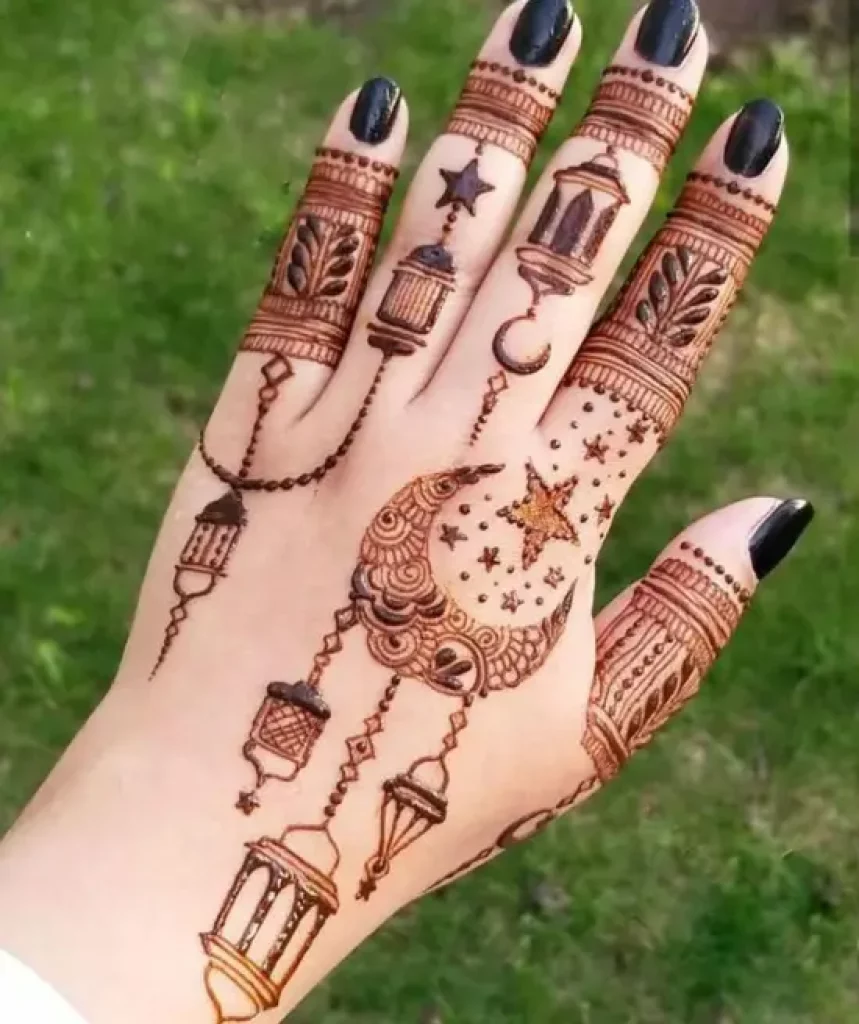
image credit quillcraze.com
A celestial theme with stars and moons is a design concept inspired by the beauty of the night sky. It captures the magic and wonder of gazing at the heavens. This theme typically incorporates elements like stars, crescent moons, planets, and celestial bodies, often rendered in shimmering metallics or deep blues and blacks to mimic the night sky.
In conclusion, back hand mehndi designs for Diwali are not just a form of body decoration but a cherished tradition that holds cultural and spiritual significance. They bring beauty, elegance, and a sense of celebration to the festival, making it an integral part of Diwali preparations. Embracing this art form not only connects individuals with their heritage but also adds a touch of auspiciousness and artistic expression to the festivities, creating lasting memories and a sense of joy during the Festival of Lights.




